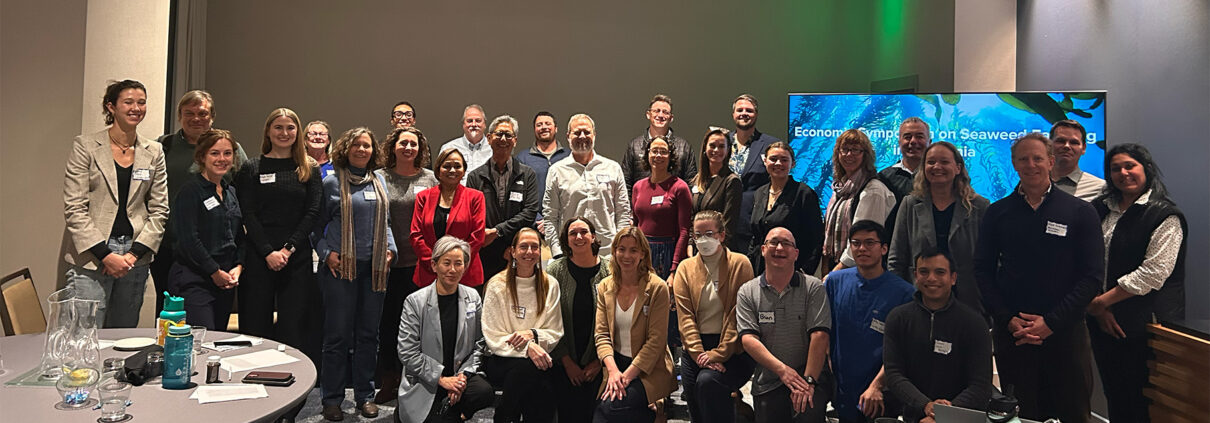It was a busy fall for OST’s seaweed aquaculture work! Following our Farmed Seaweed Science Needs Workshop in November, we co-hosted an Economic Symposium on Farmed Seaweed in California, with California Sea Grant (CASG). This invite-only symposium brought government staff, academic experts, industry representatives, and investors to Sacramento to discuss the economic opportunities and challenges to seaweed farming in California. The goal of this cross-sectoral conversation was to discuss the economic opportunities and risks associated with seaweed farming in California, identify knowledge gaps and barriers to these opportunities, learn from examples in other parts of the U.S. and globally, and ultimately explore different scenarios for seaweed farming’s role as an economic engine for California. To achieve this, the day featured a mixture of short talks, panel discussions, interactive breakout groups, and included a local seaweed-based lunch and mini “trade show” to showcase seaweed products and innovations.
Speakers included Dr. Luke Gardner, CASG; Rod Fujita, Ocean Innovations; Randy Lovell, State Aquaculture Coordinator at the California Department of Fish and Wildlife; Manjeet McCarthy, California Governor’s Office of Business Development; and others. Topics of discussion spanned the seaweed aquaculture regulatory process in California; conventional and alternative seaweed products and uses; lessons learned from seaweed farming industries in Maine, Alaska, Connecticut, and globally; and investment and financing needs. The symposium also involved an interactive session, where breakout groups evaluated hypothetical seaweed farming scenarios and scales of operation for California, to inform a vision for the sector’s role in California’s blue economy. OST and CASG developed a report summarizing the proceedings and findings of the symposium. Key takeaways include:
- Diverse Economic Opportunities: Seaweed farming offers opportunities across traditional food markets and emerging sectors such as bioplastics, nutraceuticals, biostimulants, and methane-reducing animal feeds. Developing regional and international markets would be needed for scaling these opportunities.
- Lessons from Other Regions: Growing seaweed industries in Maine, Connecticut, Alaska, and international markets demonstrate the importance of diversification, government support, access to markets, and innovative financing. These lessons provide valuable insights for adapting strategies in California.
- Barriers to Growth: Key challenges include complex regulatory frameworks, high startup costs, competition with seaweed production in other parts of the world, and a lack of scalable infrastructure in California. Addressing these barriers through streamlined permitting, programmatic CEQA evaluations, and incubator support could enable broader industry growth.
- Scalable Production Scenarios: Small and medium-scale farms were identified as the most viable options for California in the short to medium term, with opportunities to scale up if established markets and supportive policies emerge.
- Enabling Environment: Strategic investments, improved public perception, workforce training, and partnerships among academic, governmental, and private sectors would be needed to foster an enabling environment for sustainable seaweed farming.




